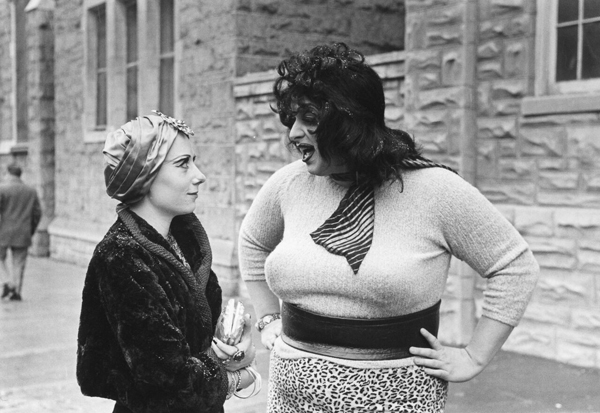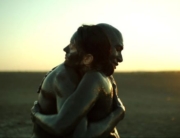Practically nonexistent for more than 20 years, John Waters’s Multiple Maniacs has been given new life thanks to Janus Films, which owns the Criterion Collection. The film is now cleaned up, with some added music and a professional-grade closing credits sequence. (Thankfully, the original opening credits, on just a long scroll of paper, are still intact.) Waters fans should hurry to any theater showing this, and anyone who is looking for a throwback to old-school renegade movies should educate themselves about perhaps the greatest to ever don the title of outsider filmmaker: John Waters, along with his cast of players, known as Dreamlanders.
Waters’s second feature film, Multiple Maniacs, is just as revolting as his third, Pink Flamingos, which was the film that made him and his leading lady, drag queen Divine, cult icons. While Pink Flamingos has remained a staple at indie movie theaters and film classes for the past 40-plus years, Multiple Maniacs fell out of public awareness, the original print supposedly stored in the director’s attic. While Pink Flamingos was filmed in color and featured some outrageous scenes, the film’s plot is all over the place; it’s more a series of vignettes than a solid story. Now that Multiple Maniacs is being given a rerelease, some may consider it the superior film, having a more solid narrative and, surprisingly, a grave social commentary on our violence-obsessed culture.
It begins with a touring troupe called the Cavalcade of Perversion. Ringleader Mr. David (played by the late David Lochary, wearing his trademark long, dyed hair—very unconventional at the time) lures unwitting, wholesome men and women off the street and into carnival shows of perversion. After a display of shocking yet silly attractions, such as a woman licking a bicycle seat and two men sharing a kiss, the main feature, Lady Divine (played by the immortal Divine) enters, and the audience is promptly tied up and robbed at gunpoint.
We come to find out Lady Divine and Mr. David, partners and lovers, have had a rift in their relationship because her lust for violence has been escalating; he believes she is heading toward a full-on psychosis. Mr. David is also having an affair with ingénue performer Bonnie, a blonde bombshell into kinky sex, played hilariously by Waters mainstay Mary Vivian Pearce.
Meanwhile, Divine has been made aware of Mr. David and Bonnie’s tryst by barmaid and Waters fan favorite Edith Massey, wearing what appears to be a cocktail dress she picked out for her big screen debut. (Massey was asked to play herself as she owned and operated the dive bar Waters and friends frequented during filming.)
On Lady Divine’s quest to kill Mr. David and Bonnie, she is waylaid by a sexual assault that leaves her in a hallucinatory state that leads to a church, where she meets Mink, played by Mink Stole, in her first of many Waters films, and the two engage in possibly the most sacrilegious scene in all of film. (It involves a rosary as a sex toy and is just begging some clever YouTuber out there to splice it together with scenes from Mel Gibson’s The Passion of the Christ.)
From that point on, Multiple Maniacs becomes a bloodbath. After her experience in the church, Lady Divine has spun into full psychotic mode, believing she is one with God and therefore can enact her will upon the earth. She murders, cannibalizes, rampages through downtown Baltimore Godzilla-style, and has an encounter with a 15-foot boiled lobster that is completely untethered from reality.
Even after nearly half a century, the filth of Multiple Maniacs still holds up. While it is so low budget and amateurish, the film’s flaws are actually the best part of the viewing experience. None of the Dreamlanders will ever be labeled as “convincing actors,” but that makes it all the more fun—in his love scene, Lochary gives what may be one of the funniest line readings of all time.
Because Waters was using very basic editing tools and was not formally trained, many scenes begin with actors standing still, waiting for him to give them the cue while the film is rolling, and characters state exactly what they are thinking and exactly what they want; a preschooler could have written the script. But take a step back from the crudeness and you begin to realize how heavily steeped in satire it is. The simplicity of the characters, their motivations, and their actions gives way to deeper questions. Mainly, why does so-called American “wholesomeness” value violence over sexuality? Is endemic sexual repression tied to outbreaks of violence? Those questions not only still hold up in today’s world, they may even be more resonant. In that case, Multiple Maniacs is a gift given back to the world.

















Leave A Comment